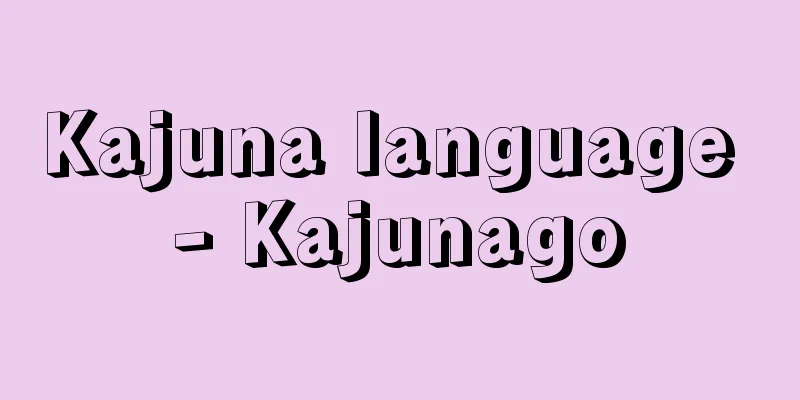Kajuna language - Kajunago

|
...there are between 20,000 and 40,000 speakers. It is also called Khajuna or Kunjuti by neighboring ethnic groups. It is thought to have been surrounded and influenced by Indo-Aryan, Iranian, Turkic, and Tibetan languages, but since it has no written form, the process of its historical evolution is unclear. *Some of the terminology that refers to "Kajuna language" is listed below. Source | Heibonsha World Encyclopedia 2nd Edition | Information |
|
…話し手は2万~4万人。隣接の民族からはカジュナ語Khajuna,クンジュティ語Kunjutiとも呼ばれる。インド・アーリヤ系,イラン系,チュルク系,チベット系の諸言語に取り囲まれて,その影響を受けてきたと考えられるが,文字がなく,歴史的変遷の過程は明らかでない。… ※「カジュナ語」について言及している用語解説の一部を掲載しています。 出典|株式会社平凡社世界大百科事典 第2版について | 情報 |
<<: Kashubian language - Kashubian (English spelling)
>>: Fruit puree - Kajutsu Puree
Recommend
International administrative law
Generally, it refers to treaties on the administra...
Art Festival
This is an arts festival held every autumn from O...
Abu Ishaq - Abu Ishaq
...One of the Sufi orders (tariqas) founded by Ab...
Botha, L.
…After the war, Britain sought reconciliation wit...
The strange king
…His pen name was Si Yin. His other name was Qi Z...
Loxogramme
...An epiphytic evergreen perennial fern of the P...
3rd power - Sanjo
A Buddhist doctrinal term. In Sanskrit, it is cal...
Renku - Renku
A haiku term. A style of poetry and literature in...
Church of the Nazarene
One of the leading Holiness churches in the United...
Ryoma Sakamoto
A patriot of the late Edo period. With the arrival...
Fujiwara no Hidehira - Fujiwara no Hidehira
Year of death: Bunji 3.10.29 (1187.11.30) Year of ...
Thistle
Thistles are a type of plant that grows in the ge...
Fireball of Rage
This is a classic Rakugo piece. It is also called ...
Solubility product
This refers to the concentration product of catio...
Ag₂S - AgS
…Periodic table element symbol = Ag Atomic number...









